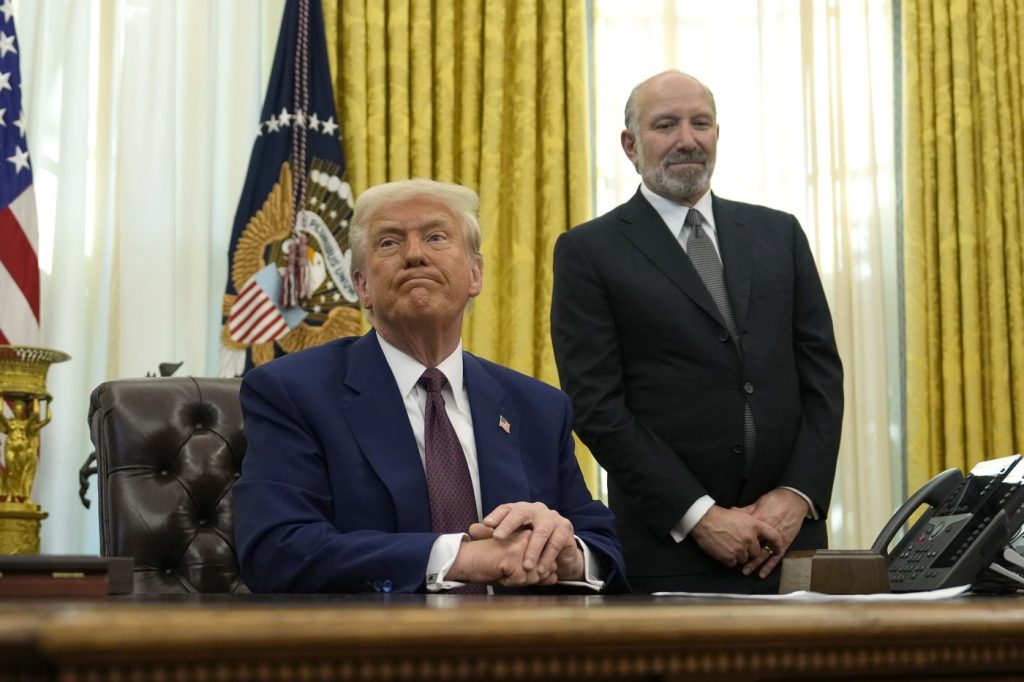In a significant shift in U.S. trade policy, President Donald Trump has announced a series of “reciprocal” tariffs aimed at matching the import taxes imposed by other countries on American goods. This initiative, presented on Thursday, threatens to upend the long-standing rules that have guided global trade since the 1960s, potentially leading to disruption for international businesses and strains in relationships with both allies and adversaries.
Historically, tariffs emerged from multilateral negotiations among various countries, but Trump’s administration is seeking to take control of this process. Richard Mojica, a trade attorney, expressed concerns over the proposed changes, stating, “Clearly this is ripping up trade. There are going to have to be adjustments all over the place.” The President argues that enduring trade deficits, which have persisted since 1975, indicate an unbalanced playing field disadvantaging U.S. companies. He claims that the reason for this imbalance lies in the higher taxes other nations impose on American exports compared to U.S. tariffs on their goods.
To address this perceived injustice, Trump is advocating for U.S. tariffs to be raised in alignment with the tariffs set by other nations. “If they charge us, we charge them,” Trump told reporters, proposing a one-to-one correlation in tariff rates. However, the specifics of how these tariffs will be implemented remain unclear, with the White House instructing Commerce Secretary Howard Lutnick to provide a comprehensive report by April 1 detailing the operational aspects of the new tariff structure.
Among the key uncertainties is whether the U.S. will evaluate thousands of items individually or employ a broader approach comparing average tariffs by country. Stephen Lamar, the president of the American Apparel & Footwear Association, remarked that the current trade environment has become chaotic, complicating long-term business planning.
The United States has long maintained lower tariffs compared to many trading partners. After World War II, the U.S. led efforts to reduce global trade barriers, promoting lower tariffs to foster peace and economic prosperity. Despite Trump’s aggressive tariff policies, which began during his first term with measures against foreign steel, aluminum, and Chinese products, the trend of higher foreign tariffs has not emerged as a targeted affront against the U.S. These tariffs were established through extensive international negotiations during the Uruguay Round trade talks, which concluded with a broad agreement involving 123 countries. The structure allowed each country to set different tariffs but limited them from imposing discriminatory measures against individual nations under the “most favored nation” principle.
Critics of Trump’s tariffs highlight that such measures often lead to higher prices for consumers, making them a challenging proposition. However, some economists, like Christine McDaniel from the Mercatus Center, suggest that the increased threat of tariffs could potentially motivate other countries to lower their import taxes as well. For instance, India has already reduced tariffs on several American products and has increased its energy purchases from the U.S.
Among the complexities surrounding Trump’s tariff strategy is the issue of value-added taxes (VATs) imposed by many countries, which some officials in the Trump administration equate to tariffs since they affect U.S. exports. Economists argue that these taxes are not discriminatory and serve as a crucial revenue source for many governments, complicating negotiations around them. Paul Ashworth from Capital Economics noted that significant retaliatory tariffs could exceed the proposed universal 10% duties advocated by Trump.
Despite the rationale behind the reciprocal tariffs, historical evidence suggests that such measures may not effectively narrow the U.S. trade deficit, which reached $918 billion last year, the second-highest on record. Economic experts, including Kimberly Clausing from UCLA, emphasize that the trade deficit stems from broader economic factors, such as low savings rates and high consumer spending in the U.S.
Overall, Trump’s trade strategy marks a stark departure from established free trade principles and reflects ongoing tensions regarding international economic policy. The ramifications of his proposed tariffs will likely reverberate through the global economy as allies and trading partners respond to this unprecedented approach to U.S. trade relations.










